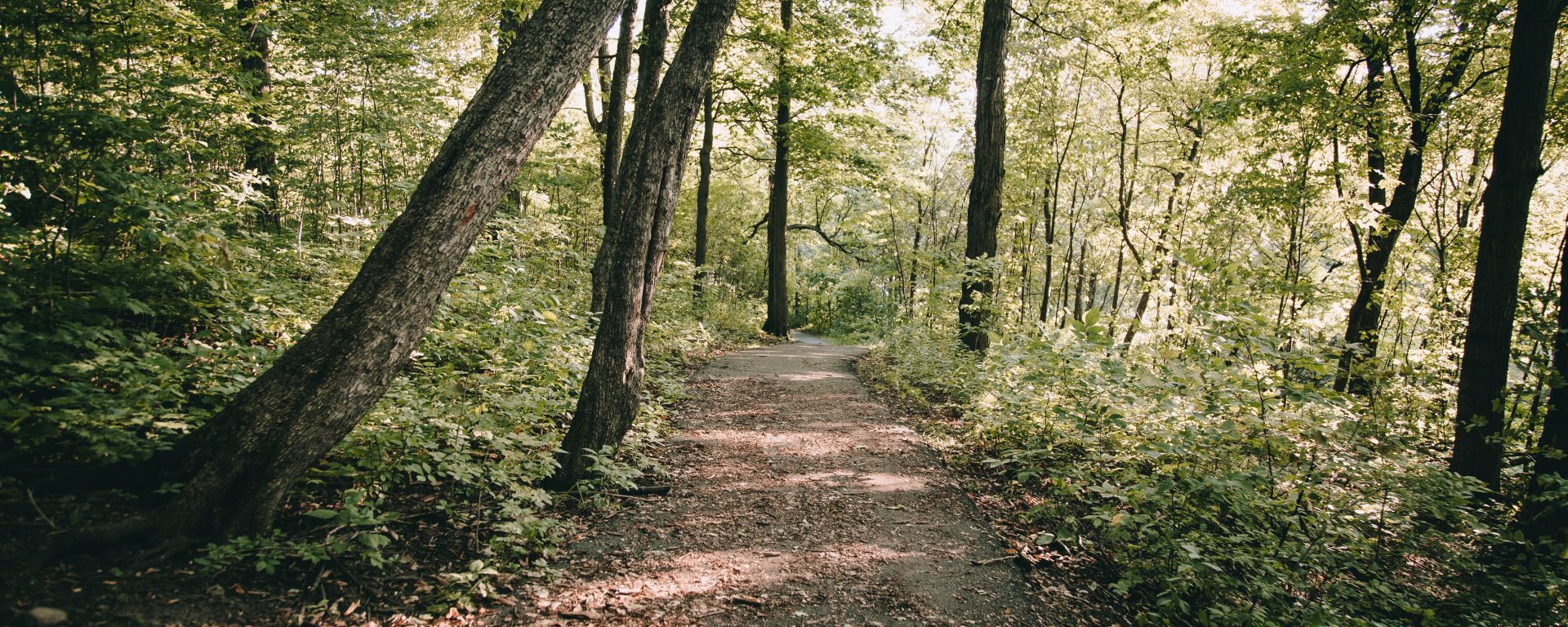Connecting America One Trail at A Time
by Austin Kenyon, Goodwin University Environmental Studies student
Many individuals aged 50 and over live in social isolation, resulting in a decrease in shared stimulation and sense of community, and an increase in feelings of loneliness. Humans are social animals and need to interact with others in order to maintain a good state of mental health. Unfortunately, many in the senior citizen population face social isolation and loneliness on a daily basis and for a variety of reasons.
With data provided by the Administration for Community Living and the Administration on Aging, we can estimate the number of seniors living in such conditions. According to a study conducted in 2017, 20% of men and 34% of women 65 or older in the United States live alone in isolated environments. For clarity, “social isolation” refers to an individual’s not having enough people with whom to interact (Menec, 2016). The National Institute on Aging cites a number of potential mental and physical health risks resulting from social isolation in seniors including high blood pressure, heart disease, obesity, a weakened immune system, anxiety, depression, cognitive decline, Alzheimer’s disease, and even death (National Institute of Aging, 2019).
Promoting engaging, interactive activities to senior populations helps combat the health risks associated with social isolation and loneliness: simply taking a neighborhood walk could be incredibly beneficial to an elderly person. The benefits are endless. Information gathered from the Better Health Channel suggests that the health benefits of physical activity include reduced risk of heart attack, high blood pressure, type 2 diabetes, osteoporosis, high blood cholesterol level, certain cancers, and likelihood of falls. Benefits range from more efficient weight management and stronger bones, muscles, and joints to increased energy, relaxation, and quality of sleep patterns. Physical activity works in tandem with mental health as well, helping with depression, blocking negative thoughts, increasing social contact, and elevating moods (Better Health Channel, 2018).
To promote outdoor activities across the nation, “greenways” have been created as open spaces that protect natural resources, preserve scenic landscapes and historical resources, and offer opportunities for healthy lifestyles, recreation, and non-motorized transport, especially in and near greatly populated areas. The movement started in the U.S. in the 1950’s and greenways became a term used to describe recreational trails designed to promote a healthy lifestyle in urban areas. In 1987, the official initiative was launched to create a greenways network in the U.S. and has grown to include the many recreational trails encountered today. These trails are blessings to the senior citizen population, providing an outdoor space for socializing and exercise, regardless of residential location. In Connecticut, these corridors are primarily overseen by the Department of Energy and Environmental Protection (DEEP).
These trails afford easy access to and from favorite scenic routes. Thanks to funding from the Department of Energy and Environmental Protection (DEEP) and Goodwin University, located in East Hartford, Connecticut, visitors are now welcome to the newly constructed Greenways South Meadow trail along the breathtaking banks of the Connecticut River. Trails have been thoughtfully constructed and are fully compliant with the American Disabilities Act (ADA), allowing disabled elderly people to enjoy a stroll through the woods. With funding provided by AARP, Goodwin University has established signage along the trail, adding informative facts to the walk. These signs provide information on the wildlife surrounding the area and historical insights on many sites along the Connecticut River.
The more than 11,184 miles of greenways now crisscrossing the U.S. allow people easier access to the world outside their front door. It’s important that retirement years not be spent isolated from society, but rather experiencing a sense of community and the wonders nature has to offer.
Interested in learning more about Greenways in your area? Your adventure is just a click away! Visit: https://portal.ct.gov/DEEP/Outdoor-Recreation/Greenways/Official-Connecticut or check out Great River Park Greenway in East Hartford, Connecticut at http://www.riverfront.org/parks/great-river-park#map.
References:
Greenways Organization. (2019). History of Greenways. Retrieved December 17, 2019, from https://www.greenways.org.pl/en/greenways/historia-greenways/.
DEEP. (2019, May 21). Come Explore Connecticut’s Greenway’s. Retrieved December 17, 2019, from https://www.ct.gov/deep/cwp/view.asp?a=2707&q=323858&deepNav_GID=1704.
Department of Health & Human Services. (2012, July 9). Physical activity – it’s important. Retrieved December 17, 2019, from https://www.betterhealth.vic.gov.au/health/healthyliving/physical-activity-its-important.
ACL & AOA. (2018, April). 2017 Profile of Older Americans. Retrieved December 17, 2019, from https://acl.gov/sites/default/files/Aging and Disability in America/2017OlderAmericansProfile.pdf.
National Institute of Aging. (2019, April 23). Social isolation, loneliness in older people pose health risks. Retrieved December 17, 2019, from https://www.nia.nih.gov/news/social-isolation-loneliness-older-people-pose-health-risks.
Menec, V. (2016, April 8). Loneliness and social isolation are important health risks in the elderly. Retrieved December 17, 2019, from https://www.mcmasteroptimalaging.org/blog/detail/professionals-blog/2016/04/08/loneliness-and-social-isolation-are-important-health-risks-in-the-elderly.
Goodwin University is a nonprofit institution of higher education and is accredited by the New England Commission of Higher Education (NECHE), formerly known as the New England Association of Schools and Colleges (NEASC). Goodwin University was founded in 1999, with the goal of serving a diverse student population with career-focused degree programs that lead to strong employment outcomes.

